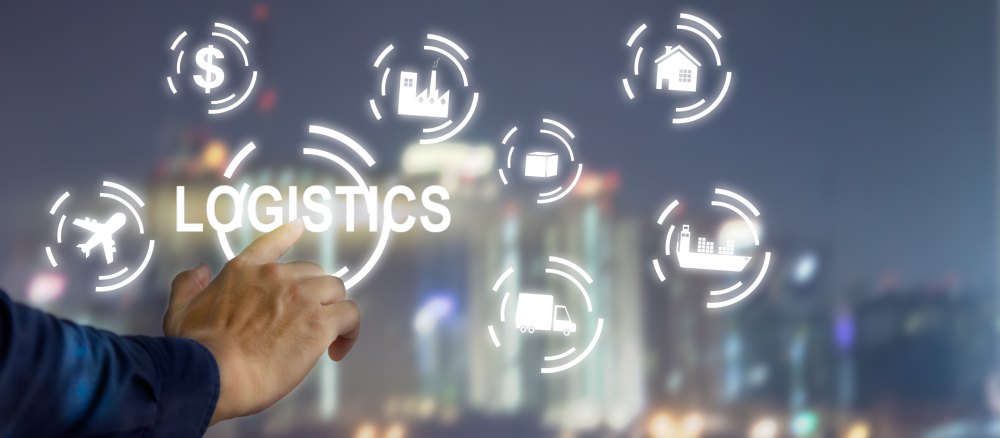The Insider’s Guide to Developing a Logistics Software Solutions
When you first start looking into solutions for your logistics operations, it can seem like there are a million different options and very little guidance on which one might be best for your company. After all, what exactly is logistics software? What does it do? Do we even need it? This blog post will introduce you to the world of logistics software as well as offer insight into how a solution could help your business.
Table of content
Table of Contents
When you first start looking into solutions for your logistics operations, it can seem like there are a million different options and very little guidance on which one might be best for your company. After all, what exactly is logistics software? What does it do? Do we even need it? This blog post will introduce you to the world of logistics software as well as offer insight into how a solution could help your business.
It covers everything from the different types of software to software implementation tips — so you feel equipped with the right information to make an informed decision when choosing a solution for your business.

What Is Logistics Software?
If you’re not yet familiar with what logistics software is, it’s time to get acquainted. Logistics software is a type of business application that is designed to help improve the supply chain process — including inventory management, shipping, and collaboration with your partners and suppliers. It’s a system that helps your entire business to run more efficiently, including your end-to-end supply chain and shipping operations. Let’s break that down even further.
Inventory management – Inventory management is the process of tracking what products your company has in stock and when they need to be reordered. This can include everything from raw materials to packaging to finished goods.
Shipping – Shipping is the process of getting your products to your customers. This includes tracking orders as they travel through the supply chain to ensure that they arrive on time.
Collaboration with partners and suppliers – Collaboration with your partners and suppliers is the part of the logistics process where you connect with your suppliers and other parties involved in getting your products to your customers. This may include things like the approval of orders or shipping notifications between you and your partners.
Logistics software is a wide-reaching software solution that covers all of these areas.
Types of logistics software
There are quite a few different types of logistics software on the market today. Each of them brings a slightly different approach to improving your business’ supply chain and shipping operations. Understanding them will help you pick the right solution for your business.
- Enterprise Software – Enterprise software is software that provides a centralized platform that houses all of your company’s various logistics functions — inventory, orders, shipping etc. All of these solutions are typically hosted in the cloud and offer complete visibility into your entire supply chain. Enterprise solutions are very scalable and can be highly customized to fit your specific business needs.
- Inventory Management Software – Inventory management software is a specialized solution designed to track product availability. It’s often used in conjunction with other solutions to track inventory from purchase to sale, but it’s not meant to replace those tools.
- Shipping Software – Shipping software is designed to help with the shipment process for a single business. It can include functionality for things like tracking and communicating with your carrier.
Why should you implement a logistics software solution?
If you’ve read about the features of logistics software above, you know that it provides a lot of useful functionality for your business. But why exactly would you want this software? Why not just use excel or other existing systems to keep track of all your data?
Just like any other business application, logistics software is designed to help you streamline and automate your operations. It will save you time and help you avoid costly mistakes.
To give you an idea of how much time can be saved by implementing a logistics software solution, the average company spends 14 hours per week on logistics activities. That’s more than two full-time employees focused solely on logistics.
By implementing logistics software, you can save yourself a lot of time and effort. It will allow you to complete your operations in less time with less effort.
How to choose the right logistics software for your business
With all the options out there, how do you actually go about picking the right logistics software for your business? First, you’ll want to consider the following factors:
- Business requirements – What does your company need from a logistics software solution? What operations does the solution need to cover? What data do you need it to collect? What do you need it to track?
- Costs – How much does each solution cost? Are there any hidden costs you should be aware of? How long does it take for the initial investment to be paid off?
- User experience – How easy is the solution to use? Will your employees be able to get up and running with it quickly?
- Scalability – Is the solution scalable enough to grow with your company?
- Implementation tips – What do you need to keep in mind when implementing the solution?
Conclusion
When you first start looking into logistics software options, it can feel like this is a very intimidating and complicated process. However, once you understand what logistics software does and the different types of software available, it should become a lot less scary. This article has provided a guide to what logistics software is and how it can help your business. It’s broken down the different types of software and provided insight into how you can go about choosing the right solution for your company.
Now that you know what logistics software is and how it can help your business, it’s time to start investigating which solution is right for you.


